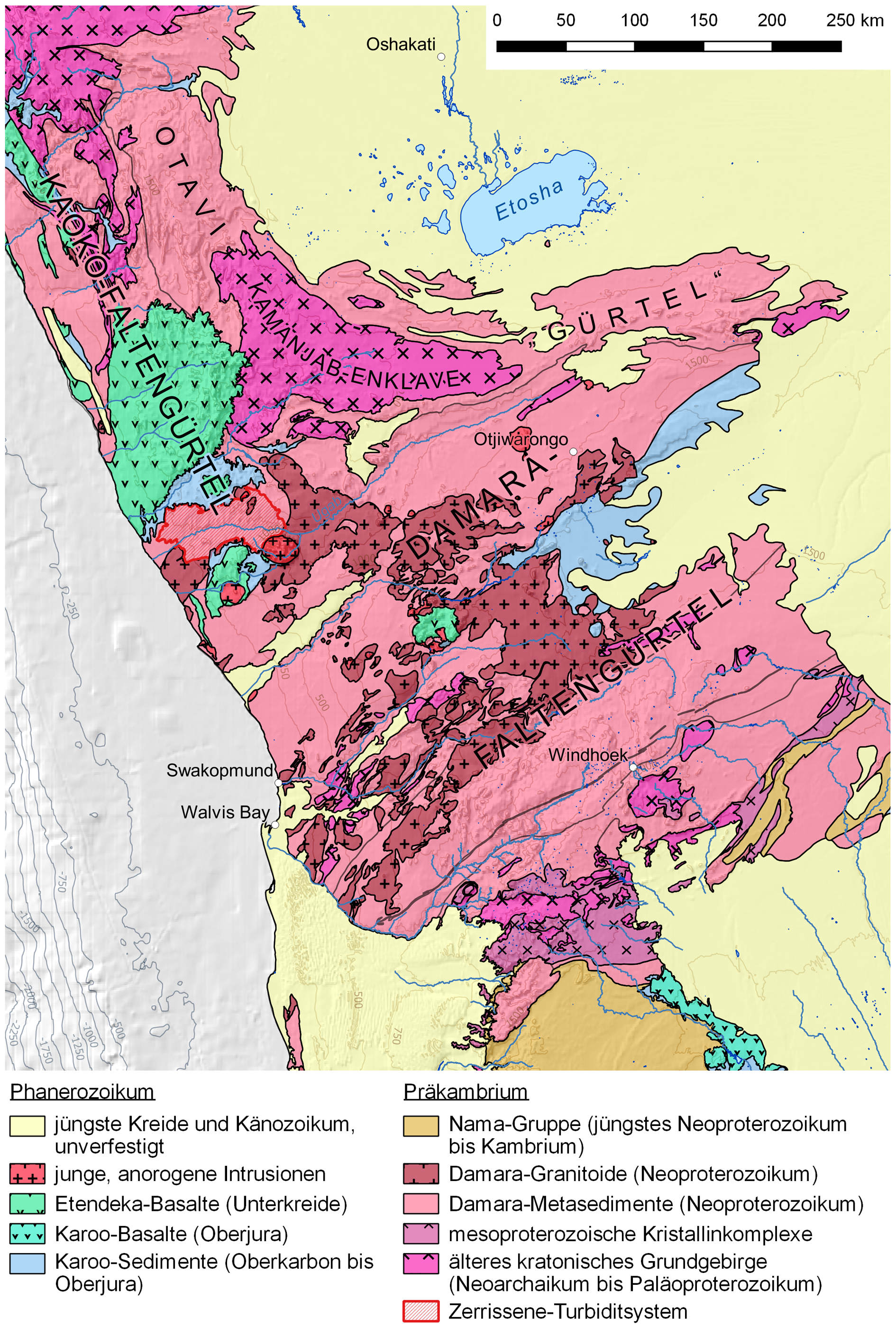|
Saurichnium
''Saurichnium'' is an ichnogenus of dinosaur footprint. Traces of different species of this genus have been found at Otjihaenamparero in central Namibia. See also * List of dinosaur ichnogenera This list of dinosaur ichnogenera is a comprehensive listing of all ichnogenera that have been attributed to dinosaurs, excluding class Aves (birds, both living and those known only from fossils) and purely vernacular terms. The list includes al ... References * Omingonde Formation Theropod trace fossils {{Trace-fossil-stub ... [...More Info...] [...Related Items...] OR: [Wikipedia] [Google] [Baidu] |
Omingonde Formation
The Omingonde Formation is an Early Triassic, Early to Middle Triassic (Anisian to Ladinian) geologic Formation (geology), formation, part of the Karoo Supergroup, in the western Otjozondjupa Region and northeastern Erongo Region of north-central Namibia. The formation has a maximum thickness of about and comprises sandstones, shales, siltstones and conglomerate (geology), conglomerates, was deposited in a fluvial depositional environment, environment, alternating between a meandering river, meandering and braided river setting. The Omingonde Formation is correlated with a series of formations in northwestern Argentina and the Paraná Basin in southeastern Brazil, deposited in a larger basinal area, 120 million years before the break-up of Pangea. The formation has provided fossils of several therapsids, amphibians and ichnofossils and belongs to the Cynognathus Assemblage Zone, ''Cynognathus'' Assemblage Zone. The Omingonde Formation preserves the most diverse fauna of Middle Tria ... [...More Info...] [...Related Items...] OR: [Wikipedia] [Google] [Baidu] |
Otjihaenamparero
The Otjihaenamparero dinosaur tracks are a set of different fossil tracks located at the Otjihaenamparero farmstead, east of the small town of Kalkfeld in the Otjozondjupa Region in central Namibia. The tracks were first reported as dinosaur imprints in 1925 and the site has in 1951 been declared a national monument. Dinosaur tracks The tracks occur in Etjo Sandstone and were first reported as dinosaur footprints by Friedrich von Huene in 1925. The tracks are believed to be from animals that moved near waterholes in an increasingly arid ecosystem. Over time, the tracks were covered with sand that then solidified into rock. All imprints appear to stem from a three-toed and clawed foot, likely from the hind feet of bipedal dinosaurs.There are two crossing tracks, counting more than 30 individual imprints of 12-15 cm in length and 80 cm apart. An additional track consists of several imprints of 7 cm length that are 28-33 cm apart. The longest traces in the Etjo Sandstone are abou ... [...More Info...] [...Related Items...] OR: [Wikipedia] [Google] [Baidu] |
List Of Dinosaur Ichnogenera
This list of dinosaur ichnogenera is a comprehensive listing of all ichnogenera that have been attributed to dinosaurs, excluding class Aves (birds, both living and those known only from fossils) and purely vernacular terms. The list includes all commonly accepted ichnogenera, but also genera that are now considered invalid, doubtful (''nomen dubium''), or were not formally published (''nomen nudum''), as well as junior synonyms of more established names, and ichnogenera that are no longer attributed to dinosaurs. Scope and terminology There is no official, canonical list of dinosaur ichnogenera. An extensive list can be found in an appendix to Donald F. Glut's third supplement to his series of dinosaur encyclopedias (2003). The vast majority of citations are based on Glut's list; exceptions, such as more recent ichnotaxa, are noted. Synonymies are also after Glut. A B C D E F G H I J K L M N O __NOTOC__ P Q R S ... [...More Info...] [...Related Items...] OR: [Wikipedia] [Google] [Baidu] |
Ichnogenus
An ichnotaxon (plural ichnotaxa) is "a taxon based on the fossilized work of an organism", i.e. the non-human equivalent of an artifact. ''Ichnotaxon'' comes from the Ancient Greek (''íchnos'') meaning "track" and English , itself derived from Ancient Greek (''táxis'') meaning "ordering".Definition o'ichno'at dictionary.com. Ichnotaxa are names used to identify and distinguish morphologically distinctive ichnofossils, more commonly known as trace fossils (fossil records of lifeforms' movement, rather than of the lifeforms themselves). They are assigned genus and species ranks by ichnologists, much like organisms in Linnaean taxonomy. These are known as ichnogenera and ichnospecies, respectively. "Ichnogenus" and "ichnospecies" are commonly abbreviated as "igen." and "isp.". The binomial names of ichnospecies and their genera are to be written in italics. Most researchers classify trace fossils only as far as the ichnogenus rank, based upon trace fossils that resemble eac ... [...More Info...] [...Related Items...] OR: [Wikipedia] [Google] [Baidu] |
Dinosaur
Dinosaurs are a diverse group of reptiles of the clade Dinosauria. They first appeared during the Triassic Geological period, period, between 243 and 233.23 million years ago (mya), although the exact origin and timing of the #Evolutionary history, evolution of dinosaurs is a subject of active research. They became the dominant terrestrial vertebrates after the Triassic–Jurassic extinction event 201.3 mya and their dominance continued throughout the Jurassic and Cretaceous periods. The fossil record shows that birds are feathered dinosaurs, Evolution of birds, having evolved from earlier Theropoda, theropods during the Late Jurassic epoch, and are the only dinosaur lineage known to have survived the Cretaceous–Paleogene extinction event approximately 66 mya. Dinosaurs can therefore be divided into avian dinosaurs—birds—and the extinct non-avian dinosaurs, which are all dinosaurs other than birds. Dinosaurs are varied from taxonomy (biology), taxonomic, ... [...More Info...] [...Related Items...] OR: [Wikipedia] [Google] [Baidu] |

